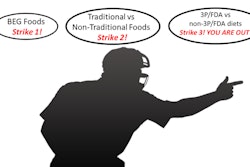
J.M. Smucker’s pet segment net sales decreased 6% to US$648 million in the first quarter, ended July 31, 2021, of the company’s 2022 fiscal year, compared to last year at this time. That sales decline accompanies a 36% drop in Smucker’s pet segment profitability to US$79.9. Higher commodity and transportation costs related to the ongoing pandemic may have contributed to this decline. These results also include the effects of Smucker’s sale of Natural Balance in January.
Although sales and profit declined, cat food and dog snacks continued to perform well, growing 4% and 3% respectively, Tucker Marshall, J.M. Smucker chief financial officer, said during an earnings call. Meow Mix, Pup-Peroni, and Milk-Bone brands led these sales increases. Dog food net sales declined 4%, as sales of Nutrish dry dog food and the Kibbles n’ Bits brand decreased.
“Within dog food, our efforts to evolve the Nutrish brand and accelerate growth are lagging our expectations,” Smucker CEO Mark Smucker said. “As a result, the return to growth for this brand will be delayed beyond the current fiscal year. We are currently evaluating additional actions to ensure that we position the business appropriately for sustained long-term growth.”
Smucker expects profitability later in year
However, the pet segment’s comparable net sales grew at a 3% compound annual growth rate on a two-year basis.
“I think you have to acknowledge the cost inflationary, and pressures in that business driven by the underlying commodities such as animal fats and proteins, along with the impact of transportation,” Smucker said in response to an attendee question.
The declines also came before any pricing benefit due to pricing actions that were taken in July, he said.
“We would anticipate that profitability in pet food come back in the back half of the year as pricing begins to reflect half-year benefit against a partial year first half, and then it will be down year-over-year due to the timing of price recovery against cost inflation,” he said.


















